Roman Historians Collection (22 vols.)
Digital Logos Edition
Overview
The Roman Historians Collection brings you works by five significant Roman historians: Sallust, Velleius Paterculus, Tacitus, Florus, and Ammianus Marcellinus. Brought together in this 22-volume collection, their writings provide a comprehensive study of the Roman Empire.
Each text reflects its author’s perspective and style. Sallust provides detailed accounts of the empire’s significant political moments. In Compendium of Roman History, Velleius Paterculus—soldier-turned-historian—creates a biographical sketch of Rome with detailed depictions of Roman personage. In The Histories and The Annals, Cornelius Tacitus—recognized for his often unflinching political analysis—details the reigns of Roman emperors. Florus, in Epitome of Roman History, comments on the decline of Roman morals. Ammianus Marcellinus, in the surviving books of Rerum Gestarum Libri XXXI recounts the fourth–century Roman Empire. An eyewitness to the events, Ammianus’ descriptions are personal and vivid. Together, these valuable volumes provide a multidimensional picture of one of the greatest empires in history—from the foundations of the city of Rome to the beginning of its collapse at the Battle of Adrianople.
This collection contains the complete texts in their Loeb Classical Library editions. Each text is included in its original Latin, with an English translation for side-by-side comparison. Use Logos’ language tools to go deeper into the Latin text with linked translations, definitions, and pronunciation tools. You can also use the dictionary lookup tool to examine difficult English words. Quick and easy access to maps and charts, as well as definitions and lexical information, allows you to understand historical events like never before.

Key Features
- Comprehensive history of one of the world’s largest empires
- Key works by Sallust, Velleius Paterculus, Tacitus, Florus, and Ammianus Marcellinus
- Loeb Classical Library editions
Product Details
- Title: Roman Historians Collection
- Authors: Sallust, Velleius Paterculus, Cornelius Tacitus, Lucius Annaeus Florus, and Ammianus Marcellinus
- Translators: J. C. Rolfe, Frederick W. Shipley, Clifford H. Moore, John Jackson, William Peterson, and E. S. Forster
- Series: Loeb Classical Library
- Publishers: G. P. Putnam’s Sons, Harvard University Press, and Macmillan Co.
- Volumes: 22
- Pages: 5,792
Individual Titles
- Sallust
- Sallust: Latin Text
- Compendium of Roman History. Res Gestae Divi Augusti
- Compendium of Roman History. Res Gestae Divi Augusti: Latin Text
- Tacitus, vol. 1: The Histories: Books 1–3
- Tacitus, vol. 1: The Histories: Books 1–3: Latin Text
- Tacitus, vol. 2: The Histories: Books 4–5. The Annals: Books 1–3
- Tacitus, vol. 2: The Histories: Books 4–5. The Annals: Books 1–3: Latin Text
- Tacitus, vol. 3: The Annals: Books 4–6, 11–12
- Tacitus, vol. 3: The Annals: Books 4–6, 11–12: Latin Text
- Tacitus, vol. 4: The Annals: Books 13–16
- Tacitus, vol. 4: The Annals: Books 13–16: Latin Text
- Tacitus: Dialogus, Agricola, Germania
- Tacitus: Dialogus, Agricola, Germania: Latin Text
- Florus: Epitome of Roman History
- Florus: Epitome of Roman History: Latin Text
- Ammianus Marcellinus, vol. 1: Books 14–19
- Ammianus Marcellinus, vol. 1: Books 14–19: Latin Text
- Ammianus Marcellinus, vol. 2: Books 20–26
- Ammianus Marcellinus, vol. 2: Books 20–26: Latin Text
- Ammianus Marcellinus, vol. 3: Books 27–31
- Ammianus Marcellinus, vol. 3: Books 27–31: Latin Text
This title is included in the following collections
You can save when you purchase this product as part of a collection.
Classic Catholic Scholarship C...
$3,413.99$3,413.99Classic Scholarship Collection...
$12,102.39$7,299.99
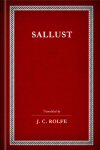
This text includes J. C. Rolfe’s English translations of The War with Catiline, The War with Jugurtha, and the complete Orations and Letters from Sallust’s otherwise fragmented The Histories. In The War with Catiline, Sallust writes of the Roman senator Catiline’s attempt to overthrow the Roman Republic in 63 BC. The War with Jugurtha recounts the war waged against Jugurtha, the Numidian prince, from 112 BC to 105 BC. The Orations and Letters section includes The Speech of Lepidus, The Speech of Philippus, The Speech of Gaius Cotta, The Letter of Pompey, The Speech of Macer, and The Letter of Mithridates.
Rolfe also includes a section of pseudo-Sallustian works—texts that are believed to have been written in an imitation of Sallust and are often mistakenly attributed to him. These works include the Speech to Caesar on the Administration of the State, the Letter to Caesar, The Invective against Marcus Tullius, and The Invective of Marcus Tullius against Sallust.
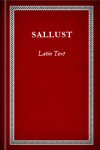
This text includes the Latin text of The War with Catiline, The War with Jugurtha, and the complete Orations and Letters from Sallust’s otherwise fragmented The Histories. In The War with Catiline, Sallust writes of the Roman senator Catiline’s attempt to overthrow the Roman Republic in 63 BC. The War with Jugurtha recounts the war waged against Jugurtha, the Numidian prince, from 112 BC to 105 BC. The Orations and Letters section includes The Speech of Lepidus, The Speech of Philippus, The Speech of Gaius Cotta, The Letter of Pompey, The Speech of Macer, and The Letter of Mithridates.
This volume also includes a section of pseudo-Sallustian works—texts that are believed to have been written in an imitation of Sallust and are often mistakenly attributed to him. These works include the Speech to Caesar on the Administration of the State, the Letter to Caesar, The Invective against Marcus Tullius, and The Invective of Marcus Tullius against Sallust.
Sallust was born in 86 BC in Amiternum, 55 miles northeast of Rome. At an early age, he became involved in Roman politics. During his political career, he was a member of the senate and tribune of the commons. Sallust is well-known for the brevity of his writing style and use of archaic words and phrases. It is believed that he modeled his writing after Cato the Elder and Thucydides.
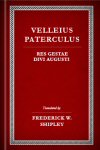
Compendium of Roman History. Res Gestae Divi Augusti
- Authors: Velleius Paterculus and Augustus, emperor of Rome
- Translator: Frederick W. Shipley
- Series: Loeb Classical Library
- Publisher: Harvard University Press
- Publication Date: 1924
- Pages: 234
This volume contains Frederick W. Shipley’s English translation of Velleius Paterculus’ Compendium of Roman History and Res Gestae Divi Augusti. Velleius Paterculus was a soldier and historian. In the Compendium he writes a summarized history of Rome, beginning with the fall of Troy and ending in AD 29. Res Gestae Divi Augusti is a funerary account, written by Augustus, the first emperor of Rome, about his achievements.
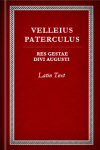
Compendium of Roman History. Res Gestae Divi Augusti: Latin Text
- Author: Velleius Paterculus and Augustus, emperor of Rome
- Series: Loeb Classical Library
- Publisher: Harvard University Press
- Publication Date: 1924
- Pages: 234
This volume contains the Latin text of of Velleius Paterculus’ Compendium of Roman History and Res Gestae Divi Augusti. Velleius Paterculus was a soldier and historian. In the Compendium he writes a summarized history of Rome, beginning with the fall of Troy and ending in AD 29. Res Gestae Divi Augusti is a funerary account, written by Augustus, the first emperor of Rome, about his achievements.
Velleius Paterculus (19 BC–AD 31) was a soldier and historian. He served as military tribune in Thrace, Macedonia, Greece, and the East. He also served under Tiberius for eight years in Germany and Pannonia. Paterculus’ writing style is biographical and he creates descriptive portraits of the personages of history.
Augustus, emperor of Rome (63 BC–14 AD) was founder of the Roman Empire and its first emperor. He was succeeded as emperor by his adopted son, Tiberius.
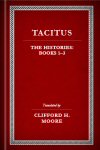
Tacitus, vol. 1: The Histories: Books 1–3
- Author: Cornelius Tacitus
- Translator: Clifford H. Moore
- Series: Loeb Classical Library
- Publisher: Harvard University Press
- Publication Date: 1925
- Pages: 260
This volume contains Clifford H. Moore’s English translations of books 1–3 of Tacitus’ The Histories. This volume begins with AD 69. Tacitus provides an account of the reigns of Galba, Otho, Vitellius, and Vespasian.
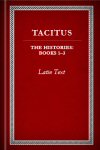
Tacitus, vol. 1: The Histories: Books 1–3: Latin Text
- Author: Cornelius Tacitus
- Series: Loeb Classical Library
- Publisher: Harvard University Press
- Publication Date: 1925
- Pages: 260
This volume contains the Latin text of books 1–3 of Tacitus’ The Histories. This volume begins with AD 69. Tacitus provides an account of the reigns of Galba, Otho, Vitellius, and Vespasian.

Tacitus, vol. 2: The Histories: Books 4–5. The Annals: Books 1–3
- Author: Cornelius Tacitus
- Translator: Clifford H. Moore and John Jackson
- Series: Loeb Classical Library
- Publisher: Harvard University Press
- Publication Date: 1931
- Pages: 334
This volume contains Clifford H. Moore and John Jackson’s English translations of books 4 and 5 of The Histories and books 1–3 of The Annals. Book 4 of The Histories begins with Vespasian as emperor. It then details the threatening uprising of the Batavians under Civilis. Book 5 continues the threatening uprising. Books 1–3 of The Annals cover years AD 14–28 and provide an account of Tiberius’ reign.
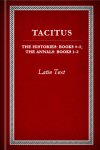
Tacitus, vol. 2: The Histories: Books 4–5. The Annals: Books 1–3: Latin Text
- Author: Cornelius Tacitus
- Series: Loeb Classical Library
- Publisher: Harvard University Press
- Publication Date: 1931
- Pages: 334
This volume contains the Latin text of books 4 and 5 of The Histories and books 1–3 of The Annals. Book 4 of The Histories begins with Vespasian as emperor. It then details the threatening uprising of the Batavians under Civilis. Book 5 continues the threatening uprising. Books 1–3 of The Annals cover years AD 14–28 and provide an account of Tiberius’ reign.
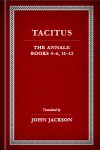
Tacitus, vol. 3: The Annals: Books 4–6, 11–12
- Author: Cornelius Tacitus
- Translator: John Jackson
- Series: Loeb Classical Library
- Publisher: Harvard University Press
- Publication Date: 1937
- Pages: 216
This volume contains John Jackson’s English translations of book 4, the surviving portion of book 5, book 6, and fragments of books 11 and 12 of The Annals. Books 4–6 continue the account of Tiberius’ reign. The fragment of book 11 opens with the seventh year of Claudius’ reign and concludes with the death of Claudius’ wife, Messalina. Book 12 continues recounting Claudius’ reign and concludes with the establishment of Nero as emperor.
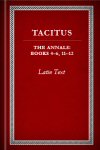
Tacitus, vol. 3: The Annals: Books 4–6, 11–12: Latin Text
- Author: Cornelius Tacitus
- Series: Loeb Classical Library
- Publisher: Harvard University Press
- Publication Date: 1937
- Pages: 216
This volume contains the Latin text of book 4, the surviving portion of book 5, book 6, and fragments of books 11 and 12 of The Annals. Books 4–6 continue the account of Tiberius’ reign. The fragment of book 11 opens with the seventh year of Claudius’ reign and concludes with the death of Claudius’ wife, Messalina. Book 12 continues recounting Claudius’ reign and concludes with the establishment of Nero as emperor.

Tacitus, vol. 4: The Annals: Books 13–16
- Author: Cornelius Tacitus
- Translator: John Jackson
- Series: Loeb Classical Library
- Publisher: Harvard University Press
- Publication Date: 1937
- Pages: 216
This volume contains John Jackson’s English translations of books 13–15 and the surviving fragments of book 16. In these books, Tacitus recounts the reign of Nero up to AD 66.
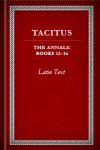
Tacitus, vol. 4: The Annals: Books 13–16: Latin Text
- Author: Cornelius Tacitus
- Series: Loeb Classical Library
- Publisher: Harvard University Press
- Publication Date: 1937
- Pages: 216
This volume contains the Latin text of books 13–15 and the surviving fragments of book 16. In these books, Tacitus recounts the reign of Nero up to AD 66.
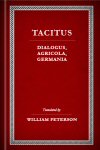
Tacitus: Dialogus, Agricola, Germania
- Author: Cornelius Tacitus
- Translator: William Peterson
- Series: Loeb Classical Library
- Publisher: Macmillan Co.
- Publication Date: 1914
- Pages: 187
This volume contains William Peterson’s English translations of the Dialogus, Agricola, and Germania. The Dialogus, written in dialogue form, is about the art of rhetoric. In the Agricola, Tacitus writes about his father-in-law, Commander Agricola, and his rise to power over Britain. Tacitus recalls his personal experiences and conversations with Agricola. The Germania is an ethnographic work about the Germanic tribes outside of the Roman Empire.
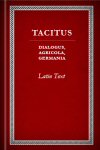
Tacitus: Dialogus, Agricola, Germania: Latin Text
- Author: Cornelius Tacitus
- Series: Loeb Classical Library
- Publisher: Macmillan Co.
- Publication Date: 1914
- Pages: 187
This volume contains the Latin text of the Dialogus, Agricola, and Germania. The Dialogus, written in dialogue form, is about the art of rhetoric. In the Agricola, Tacitus writes about his father-in-law, Commander Agricola, and his rise to power over Britain. Tacitus recalls his personal experiences and conversations with Agricola. The Germania is an ethnographic work about the Germanic tribes outside of the Roman Empire.
Cornelius Tacitus was a Roman historian. During his youth, Tacitus studied rhetoric in Rome. In AD 77, he married Julia Agricola, and, in AD 81 or 82, he became quaestor. Tacitus later held positions as senator and praetor in AD 88. Along with rhetoric, politics, and writing, Tacitus enjoyed hunting and spending time outdoors. Tacitus is recognized for his chronological narratives and character studies.

Florus: Epitome of Roman History
- Author: Lucius Annaeus Florus
- Translator: E. S. Forster
- Series: Loeb Classical Library
- Publisher: Harvard University Press
- Publication Date: 1929
- Pages: 200
This volume contains E. S. Forster’s English translation of Florus’ Epitome of Roman History. In this work, Florus provides a summary of Roman history, beginning with the foundation of the city and concluding with Augustus’ reign (30 BC–AD 14).

Florus: Epitome of Roman History: Latin Text
- Author: Lucius Annaeus Florus
- Series: Loeb Classical Library
- Publisher: Harvard University Press
- Publication Date: 1929
- Pages: 200
This volume contains the Latin text of Florus’ Epitome of Roman History. In this work, Florus provides a summary of Roman history, beginning with the foundation of the city and concluding with Augustus’ reign (30 BC–AD 14).
Lucius Annaeus Florus was a Roman historian. He was born in Africa and lived in Spain and Rome during the time of Hadrian.
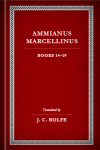
Ammianus Marcellinus, vol. 1: Books 14–19
- Author: Ammianus Marcellinus
- Translator: J. C. Rolfe
- Series: Loeb Classical Library
- Publisher: Harvard University Press
- Publication Date: 1935
- Pages: 324
This volume contains J. C. Rolfe’s English translations of books 14–19 of Ammianus’ Rerum Gestarum Libri XXXI, covering years AD 353–359. Ammianus recounts the cruelty of Gallus Caesar and Julian’s ascension to power, and his following campaigns against the Germans. Ammianus also details Rome’s conflicts with Persia, including a description of the siege of Amida.
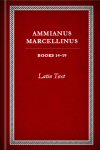
Ammianus Marcellinus, vol. 1: Books 14–19: Latin Text
- Author: Ammianus Marcellinus
- Series: Loeb Classical Library
- Publisher: Harvard University Press
- Publication Date: 1935
- Pages: 324
This volume contains the Latin text of books 14–19 of Ammianus’ Rerum Gestarum Libri XXXI, covering years AD 353–359. Ammianus recounts the cruelty of Gallus Caesar and Julian’s ascension to power, and his following campaigns against the Germans. Ammianus also details Rome’s conflicts with Persia, including a description of the siege of Amida.
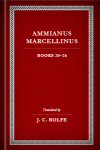
Ammianus Marcellinus, vol. 2: Books 20–26
- Author: Ammianus Marcellinus
- Translator: J. C. Rolfe
- Series: Loeb Classical Library
- Publisher: Harvard University Press
- Publication Date: 1940
- Pages: 352
This volume contains J. C. Rolfe’s English translations of books 20–26 of Ammianus’ Rerum Gestarum Libri XXXI, covering years AD 360-378. Ammianus recounts Julian’s rise to emperor, his reign, and his campaign against the Persians. Ammianus also details the brief reign of Jovian, as well as the early years of Emperor Valentinian I and his brother, Valens, who he made co-emperor.
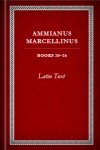
Ammianus Marcellinus, vol. 2: Books 20–26: Latin Text
- Author: Ammianus Marcellinus
- Series: Loeb Classical Library
- Publisher: Harvard University Press
- Publication Date: 1940
- Pages: 352
This volume contains the Latin text of books 20–26 of Ammianus’ Rerum Gestarum Libri XXXI, covering years AD 360-378. Ammianus recounts Julian’s rise to emperor, his reign, and his campaign against the Persians. Ammianus also details the brief reign of Jovian, as well as the early years of Emperor Valentinian I and his brother, Valens, who he made co-emperor.
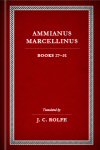
Ammianus Marcellinus, vol. 3: Books 27–31
- Author: Ammianus Marcellinus
- Translator: J. C. Rolfe
- Series: Loeb Classical Library
- Publisher: Harvard University Press
- Publication Date: 1939
- Pages: 306
This volume contains J. C. Rolfe’s English translations of books 27–31 of Ammianus’ Rerum Gestarum Libri XXXI. This volume documents the period spanning from AD 360–378. Ammianus recounts the reigns of Valentinian I and Valens, culminating in the infamous battle of Adrianople, in which Valens was killed and his army was destroyed.
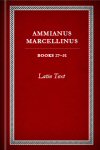
Ammianus Marcellinus, vol. 3: Books 27–31: Latin Text
- Author: Ammianus Marcellinus
- Series: Loeb Classical Library
- Publisher: Harvard University Press
- Publication Date: 1939
- Pages: 306
This volume contains the Latin text of books 27–31 of Ammianus’ Rerum Gestarum Libri XXXI. This volume documents the period spanning from AD 360–378. Ammianus recounts the reigns of Valentinian I and Valens, culminating in the infamous battle of Adrianople, in which Valens was killed and his army was destroyed.
Ammianus Marcellinus (ca. AD 325–ca. 395) was a Roman historian. What we know of Ammianus is derived from his own writings. He served as a soldier in the army of Constantius in Gaul and Persia. His writing style imitates that of Tacitus and he also models Livy’s periodic structure.